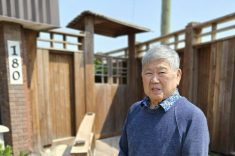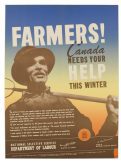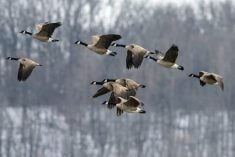PARIS, Oct 18 (Reuters) – A drought during the summer that hampered rapeseed sowing in the European Union has also caused some crops to emerge in poor condition, clouding the outlook for next year’s harvest of the oilseed.
The area sown with rapeseed may rise thanks to relatively attractive prices for the oilseed compared with cereals, with Strategie Grains putting the sown area in the EU at 6.7 million hectares, up from 6.5 million harvested this year.
But dry weather has already prevented some farmers from carrying out all the planting they had planned and led to weak early crop development in some regions, especially in France.
Read Also

Women who fed a nation
More than 40,000 young women supported the war effort between the 1940s and early 1950s, helping grow and harvest crops amid labour shortages. They were called Farmerettes.
This could limit the scope for EU rapeseed output to recover from a four-year low of 19.9 million tonnes in the 2016 harvest, as estimated by the European Commission.
In France, traders and analysts generally estimate the sown area has fallen seven percent compared with the last harvest to some 1.4 million hectares because of the parched conditions in late summer. The fragile state of some rapeseed crops due to dry conditions could leave them vulnerable to frost and pest damage.
“The situation is very mixed. In some zones, plant growth is half of what it is normally. If there is a severe frost event in the next two weeks we could see some damage,” said Andre Merrien, research director at oilseed institute Terres Inovia.
Consultancy ODA Groupe earlier this month estimated that 10 percent of sown rapeseed was in poor condition and might not make it through the winter.
Rapeseed crops in parts of Germany were also suffering from dry weather but the general picture across the country was reasonable with the overall sown area expected to be stable.
“Seed sales indicated a sown area about the same as the 1.3 million hectares Germany harvested in 2016,” an oilseeds analyst said. “Prices were low at the time of sowing decisions but rapeseed still looked relatively attractive compared to wheat.”
In Poland, the relative price to wheat also encouraged farmers with sowings thought to be up by three percent to six percent to 820,000-850,000 hectares, Wojtek Sabaranski of analysts Sparks Polska said.
“Early sown winter rapeseed is in good condition,” he said. “There are some problems with rapeseed that was sown late, due to the dry September. This is the case especially in central regions that received very little rain.”
In Britain, crops recovered following rain in September but the sown area was expected to fall, extending a longer-term decline in rapeseed.
Some rapeseed planted early had to be re-drilled but generally crops were now well established, said Susan Twining of crop consultants ADAS.
The rapeseed area in Britain may drop two to threee percent, she said, driven by declines in eastern counties where cabbage stem flea beetles have caused significant damage in previous years.
Britain’s rapeseed area fell to a seven-year low of 579,000 hectares this year, compared with a peak of 756,000 hectares for the 2012 harvest, partly due to insect damage that farmers say has been compounded by pesticide restrictions.














